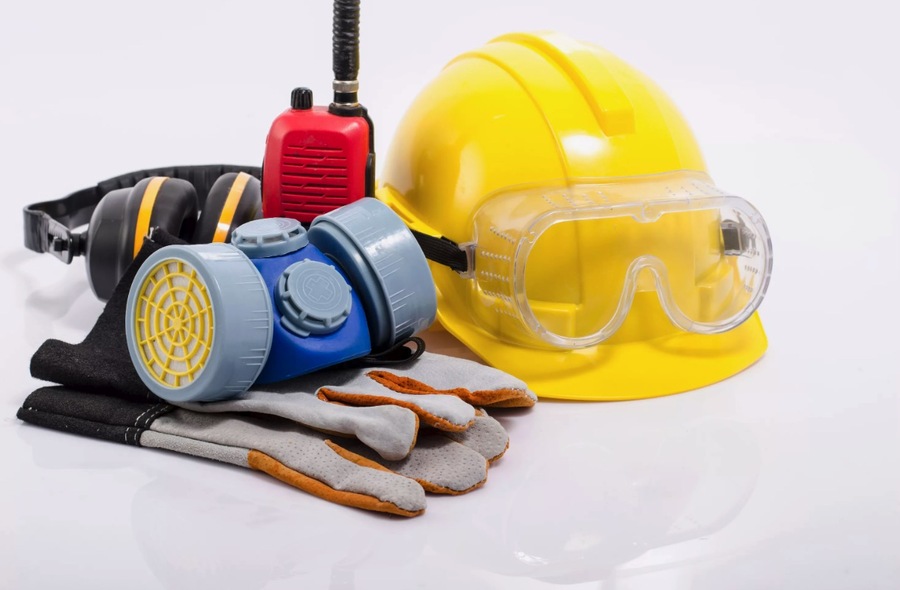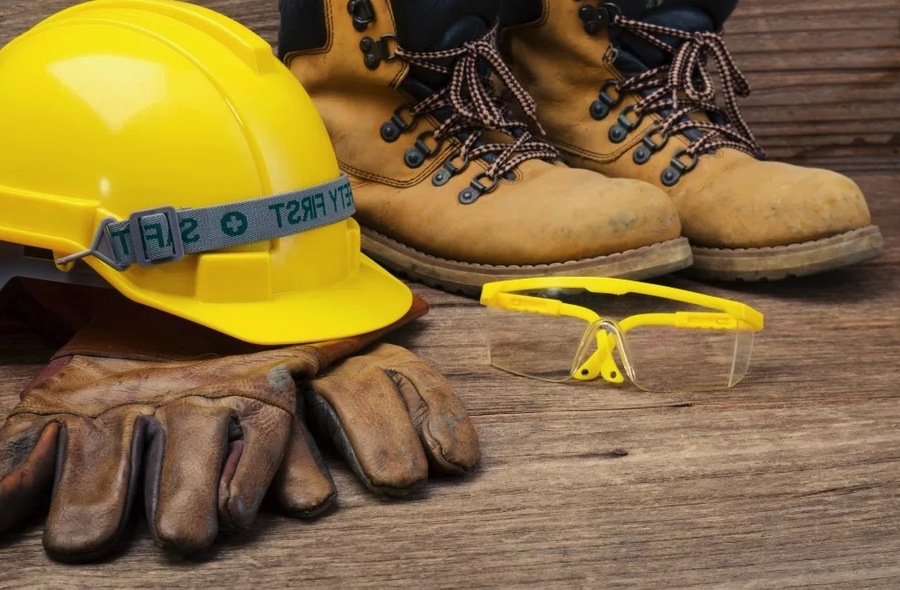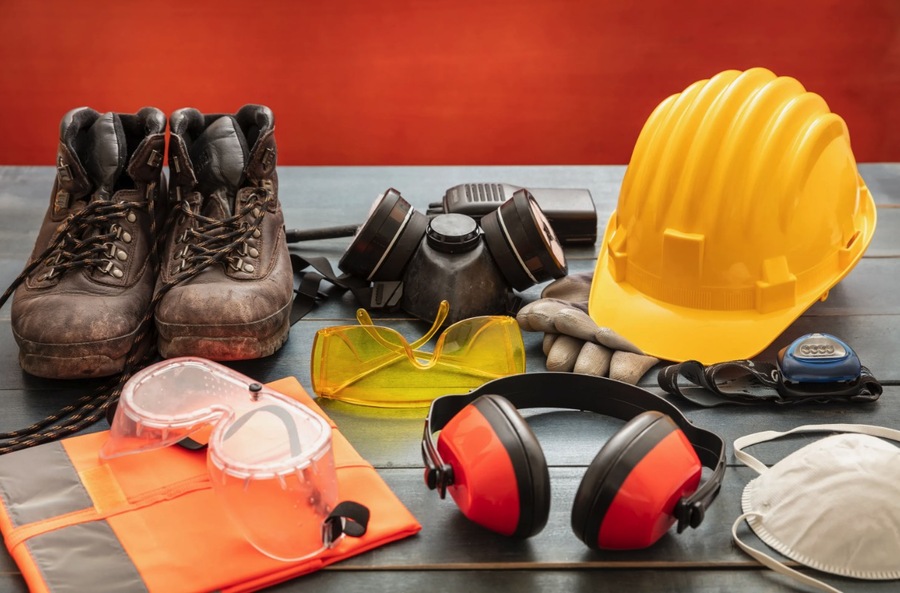
The Importance of Personal Protective Equipment (PPE) in Industrial Workplaces
Safety in industrial settings is critical. Personal Protective Equipment (PPE) protects employees from potential risks, guarantees their health, and sustains output. Using statistics, real-world examples, and contemporary research, this article examines the crucial function of personal protective equipment (PPE) in industrial settings. It delves into the many types of equipment and their unique applications, highlighting the importance of sourcing quality PPE from reliable tool suppliers in UAE.
Understanding PPE and Its Significance
What is PPE?
Personal protective equipment (PPE) is a wide array of gear to shield workers against diseases and accidents. It becomes indispensable when engineering controls or safe work practices are insufficient to remove dangers. PPE includes safety shoes, respiration protective equipment, high-visibility clothes, gloves, eye protection, and helmets.
The Importance of PPE
One cannot stress the need for PPE. The Occupational Safety and Health Administration (OSHA) states that using the appropriate PPE can prevent many yearly job fatalities and injuries. Over 2.8 million nonfatal occupational illnesses and injuries were recorded in the private sector alone in 2020, according to research by the U.S. Bureau of Labour Statistics (BLS). The right personal protective equipment (PPE) might have avoided many of these cases.
Types of PPE and Their Uses
Head Protection
Helmets and Hard Hats
Helmets and hard hats are important when there is a chance of electrical risks, head impacts, or falling items. Head protection is frequently needed in manufacturing, mining, and construction sites.
Use Case Example: Workers on construction sites frequently risk being struck by falling objects or tools. Head injuries are among the most serious and potentially fatal occupational injuries that may be avoided by wearing a hard hat.
Eye and Face Protection
Safety Glasses and Face Shields
Face shields and safety glasses protect against dangerous radiation, chemical spills, and flying debris. They are essential in fields such as welding, chemical processing, and manufacturing.
Use Case Example: Safety glasses greatly lower the risk of eye injuries by shielding workers from flying sparks, dust, and metal shavings in industrial facilities.
Hearing Protection
Earplugs and Earmuffs
To avoid hearing loss, it is essential to wear hearing protection in noisy situations like factories, construction sites, and airports.
Use Case Example: Employees in car factories use earplugs to reduce noise from machines, which can cause long-term hearing loss if exposure levels are too high.
Respiratory Protection
Masks and Respirators
Respiratory protection is required in areas with airborne pollutants, such as dust, fumes, smoke, and dangerous chemicals.
Use Case Example: To ensure they can operate safely without endangering their respiratory health, employees in chemical processing factories wear respirators to prevent themselves from breathing dangerous vapors.
Hand Protection
Gloves
Gloves offer protection against various risks, such as heat burns, chemical exposure, abrasions, and cuts. They are indispensable in sectors such as manufacturing, healthcare, and construction.
Use Case Example: Healthcare staff wear nitrile gloves to protect their hands during medical operations and avoid contact with chemicals and infectious pathogens.
Foot Protection
Safety Boots and Shoes
Safety shoes and boots guard against foot damage caused by electrical dangers, large objects, sharp objects, and slick surfaces.
Use Case Example: To lower the danger of crush accidents, warehouse employees wear steel-toed boots to protect their feet from falling boxes and pallets.

High-Visibility Clothing and Protective Suits
Wearing high-visibility clothes guarantees that employees can be seen in poor light, while protective suits shield against fire, chemical spills, and extremely high or low temperatures.
Use Case Example: Road construction workers considerably lower their risk of accidents by wearing high-visibility vests to ensure their visibility to traffic.
Recent Studies on PPE Effectiveness
PPE Reduces Injury Rates
According to 2021 research published in the Journal of Occupational and Environmental Hygiene, using PPE consistently might lower the incidence of occupational injuries by as much as 65%. The study clarified how crucial it is to enforce PPE use and provide appropriate training to optimize safety advantages.
The Economic Impact of PPE
The National Safety Council (NSC) estimates that workplace injuries cost American firms more than $170 billion annually. Investing in PPE may drastically lower these costs by preventing injuries and the resulting medical bills, lost productivity, and legal fees.
PPE and COVID-19
PPE is vital for worker protection, especially in frontline services and healthcare, as the COVID-19 epidemic has shown. In 2020 research, the Centers for Disease Control and Prevention (CDC) showed that using PPE appropriately decreased COVID-19 infection rates among healthcare workers by more than 80%.
Challenges and Solutions in PPE Implementation
Compliance: Ensuring employees always wear personal protective equipment (PPE) can be challenging, especially when the equipment is unpleasant or interferes with operations.
Training: Employees must receive the appropriate training to use and maintain personal protective equipment (PPE).
Cost: Since high-quality PPE can be pricey, some organizations choose to make compromises.
Solutions
Instruction and Practice: Offering thorough training courses may guarantee employees grasp the significance of personal protective equipment (PPE) and boost compliance. Frequent refresher courses help strengthen these habits.
Comfort and Fit: Purchasing pleasant, ergonomically designed personal protective equipment (PPE) helps increase compliance. A specially fitted PPE might be especially helpful.
Policy and Enforcement: Adherence may be guaranteed by creating explicit rules and regularly enforcing PPE regulations. Employers should also engage employees in the selection process to ensure that the PPE suits their needs.
Construction Industry
PPE, such as steel-toed boots, gloves, hard helmets, and safety glasses, is required in the construction business. These tools shield employees from heavy machinery, flying debris, falls, and sharp objects. Employers like Skanska have considerably decreased workplace accidents by implementing extensive PPE programs involving frequent safety audits and training sessions.
Manufacturing Industry
Various PPE, such as safety eyewear, protective gear, and hearing protection, are used in manufacturing plants. Toyota, for instance, has implemented cutting-edge personal protective equipment (PPE) to shield employees from mechanical risks, chemical exposure, and noise. As a result of their dedication to safety, the number of workplace injuries has significantly decreased.
Healthcare Sector
PPE, such as masks, gloves, gowns, and face shields, protects healthcare personnel from dangerous chemicals and infectious illnesses. Hospitals like the Mayo Clinic improved their protective equipment (PPE) policies during the COVID-19 epidemic, guaranteeing that all employees had access to top-notch protective gear. This proactive strategy reduced the rate of infection among healthcare personnel.
Technological Advancements in PPE
Smart PPE
Introducing cutting-edge elements into personal protective equipment (PPE) has led to development of “smart” PPE. For instance, sensors that track environmental factors and warn workers of possible risks can be found in smart helmets.
For instance, DAQRI’s smart helmet’s augmented reality (A.R.) capabilities allow workers to view real-time data by superimposing digital information over the real world.
Wearable Technology
Smartwatches and fitness trackers are examples of wearable technology being modified for use in the workplace. These gadgets’ ability to track position, monitor vital signs, and identify falls offers extra security.
For instance, the ruggedized Garmin Fenix series includes capabilities such as GPS tracking, heart rate monitoring, and event detection.
PPE Research and Innovation
Advancement in PPE technology depends on ongoing research and development. Universities, research centers, and businesses always try to enhance PPE’s use, comfort, and efficacy.
For instance, the Massachusetts Institute of Technology (MIT) is creating cutting-edge PPE materials, such as lightweight, breathable textiles with chemical resistance, that give superior protection and comfort.

The Role of Employers and Workers in PPE Effectiveness
Employer Responsibilities
Employers play a vital part in guaranteeing the efficacy of PPE in the workplace. They bear accountability for:
Giving Workers the Right Equipment: Employers are required to provide employees with the right equipment for their jobs and ensure it complies with safety regulations.
Training and Education: Employers should provide frequent training sessions to teach employees about the proper usage, upkeep, and limits of personal protective equipment (PPE).
Maintenance and Replacement: To guarantee PPE stays effective, it has to be routinely examined, maintained, and replaced as necessary.
Worker Responsibilities
Workers also must protect their safety by wearing PPE as directed. They ought to:
Observe Instructions and Training: Comply with the guidance and instructions given by employers about the proper handling of personal protective equipment.
Examine PPE Before Use: Inspect PPE for damage or faults and notify supervisors of any problems.
Wear PPE Consistently: Avoid taking shortcuts that might jeopardize your safety, and always wear the necessary PPE when conducting duties.
PPE Government Regulations: Policy and Regulation
Workplace PPE use laws are defined and enforced by government organizations, such as OSHA in the U.S. These laws define employer obligations and the kinds of personal protective equipment (PPE) needed for certain dangers.
OSHA rules require examples of PPE, such as 29 CFR 1910.133 for eye and face protection, 29 CFR 1910.134 for respiratory protection, and 29 CFR 1910.138 for hand protection.
Sectoral Guidelines
Industry associations also create standards and recommendations to guarantee that PPE satisfies certain safety requirements. Experts and industry stakeholders frequently reach a consensus to develop these standards.
For example, the International Safety Equipment Association (ISEA) and the American National Standards Institute (ANSI) have set standards for various PPE, such as protective headgear (ANSI/ISEA Z89.1) and high-visibility apparel (ANSI/ISEA 107).
PPE in Industrial Workplaces: What’s in Store
PPE in industrial settings has a bright future as long as materials science and technology progress. As industries change and new risks arise, more comfortable, adaptable, and effective personal protective equipment (PPE) must be developed to ensure worker safety.
New Developments
Integration of A.I. and IoT: Real-time data and predictive analytics are provided by A.I. and IoT, which is predicted to increase the usage of these technologies in personal protective equipment (PPE).
Sustainable PPE: It is becoming increasingly important to create environmentally friendly personal protective equipment (PPE) that is recyclable or reusable while utilizing sustainable materials.
Customized PPE: Manufacturing innovations like 3D printing will allow manufacturers to produce PPE specific to each worker’s demands and body types.
Conclusion
Personal protective equipment (PPE) is essential for maintaining worker safety and preventing accidents in industrial settings. Each form of PPE, such as safety footwear and head protection, has a distinct function in protecting workers from various threats. Recent research and statistics show the efficiency of PPE in lowering accident rates and the financial advantages of investing in worker safety.
Although implementing PPE may be challenging, clear regulations, ergonomic design, and appropriate training can help. Examples from the real world, such as those in the manufacturing, healthcare, and construction sectors, demonstrate how important PPE is to worker protection and productivity maintenance.
As industries change, the commitment to worker safety through PPE must continue to be a top concern. Employers can establish more secure, productive work environments where employees can flourish by prioritizing safety and investing in high-quality PPE. Personal protective equipment (PPE) developments are expected to improve worker safety and improve working conditions.

Soccer lover, loves to cook, guitarist. Specializes in administrative technology and is responsible for educating other employees on using progressive systems and applications.